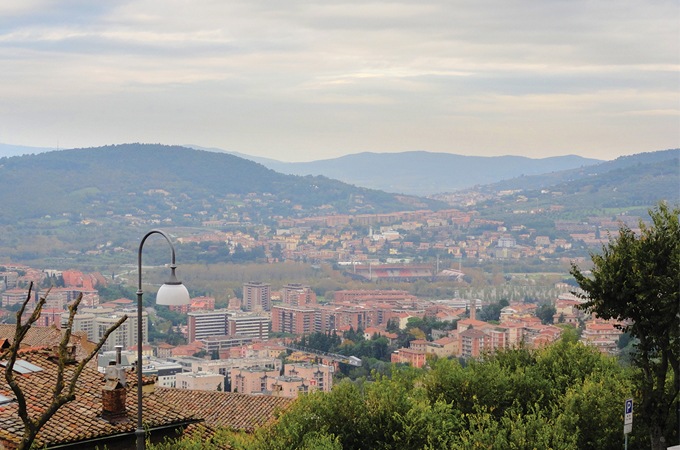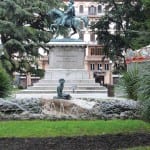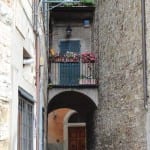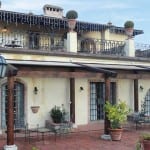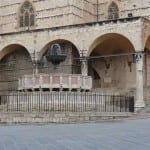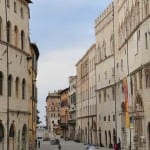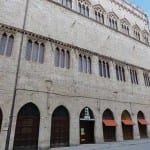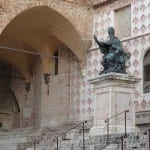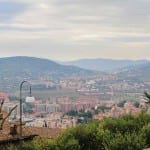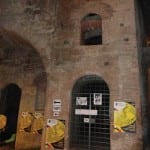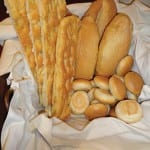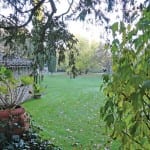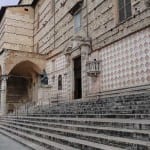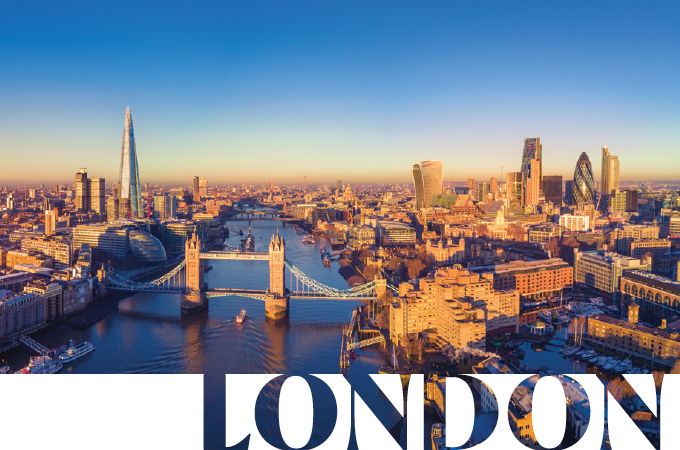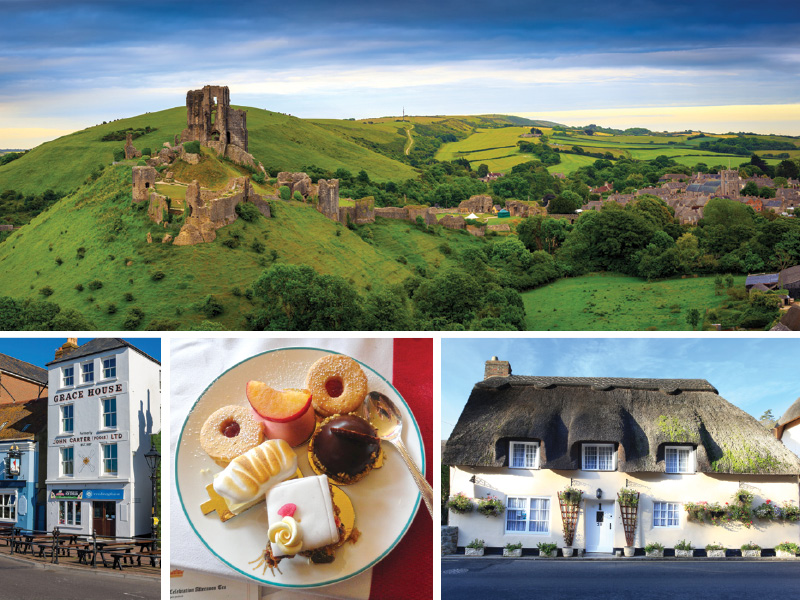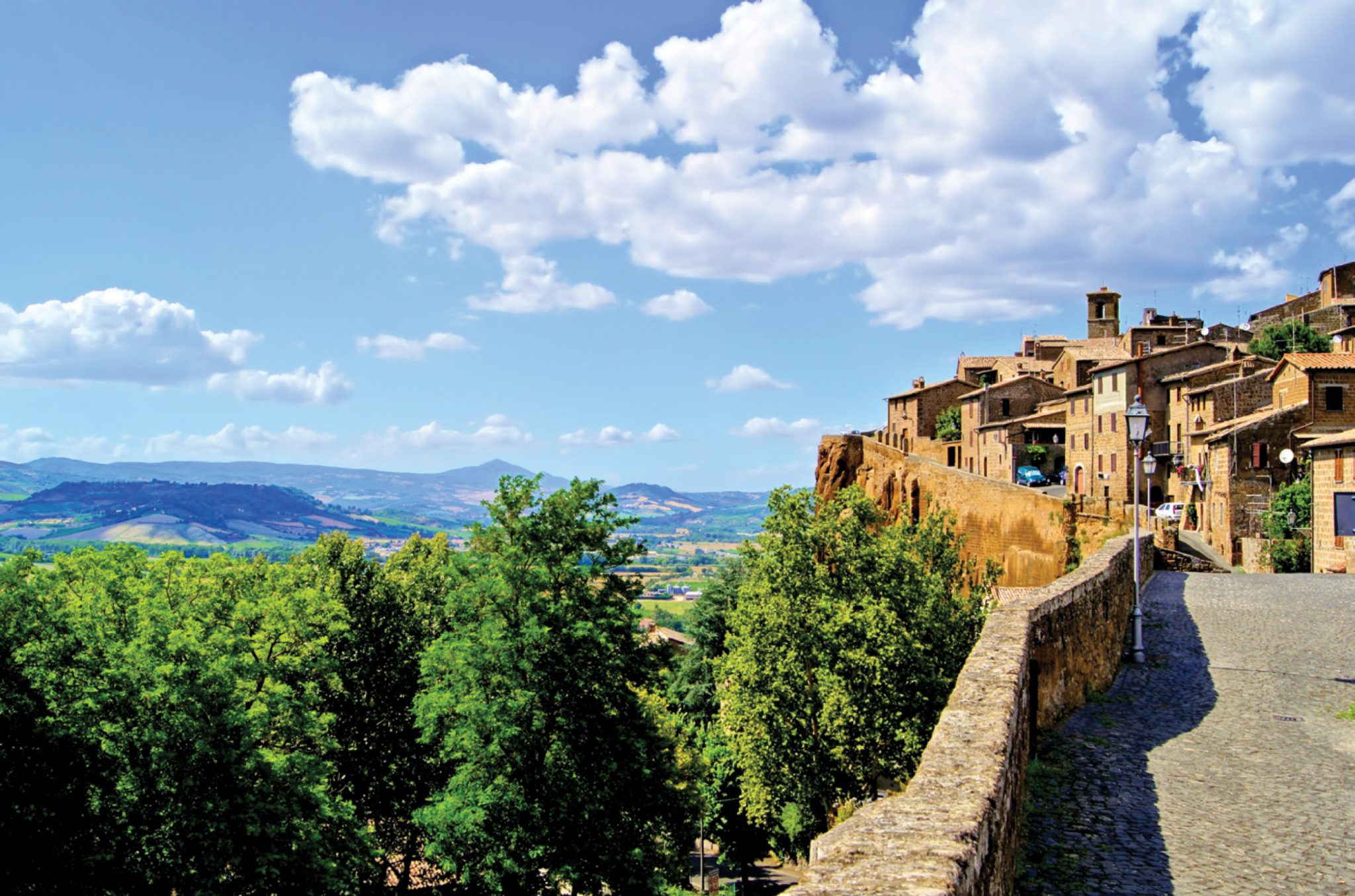While most of us probably think chocolate when we hear Perugia, the city known for those tasty Baci is also the capital of Umbria and the epicenter of its culinary and cultural heritage. A modern enclave of 80,000 today (30,000 of them students), it is rich with the history you’d expect of a papal city dating back to Etruscan times.
A statue of Viktor Emanuel in the Piazza Italia reminds us that Italy wasn’t a unified nation until 1871. Prior to that, it was a region of warring city-states, and remnants of that factionalism still can be felt today. Wherever you go in Umbria, you notice that handicrafts and foodstuffs are never stamped, Made in Italy, but rather ‘Orvieto,’ ‘Assisi’ or ‘Perugia.’
The Perugia of today is actually three cities: medieval ruins, the 16th-century ‘new city’ and today’s modern metropolis, which has grown up around the two. The ancient medieval city still can be seen underground in what is called ‘the medieval Pompeii.’ The 12th-century ruins are all that is left of Perugian homes after the Baglionis, a powerful noble family here, led a rebellion against Pope Leo’s salt tax in 1540. When Perugia lost ‘the tax wars,’ papal soldiers came in and razed the residential towers.
Then the pope ordered renowned architect Antonio da Sangallo to rebuild a new city on top of the old. That gave rise to the underground’s elegant gothic arches, tall and mesmerizing, which served as the supports for the newer city. This new city revolves around Corso Vannucci, where mysterious lanes veer off the cobblestoned boulevard, open only to pedestrian traffic. This is where Perugians come for their passegiatte, or daily stroll, as most live in apartments without private yards.
Corso Vannucci also is where street vendors hawk roasted chestnuts steps away from the city’s ancient churches, and the magnificent Fontana Maggiore (main fountain) is a one-stop lesson in Italian religion, history and agriculture. The 25 facets on the fountain’s base depict scenes from the prophets and saints, the signs of the Zodiac and the harvesting labors of the months. Umbria is rich in agriculture, with forests providing wild boar, black truffles, wild asparagus, porcini mushrooms, hare and pheasant, and these seasons are celebrated around the fountain, telling you via imagery that Umbrians live in harmony with the seasons.
Prominently perched on Corso Vannucci, Galleria Nazionale (the National Gallery) illustrates the region’s importance in the arts. As a museum of Umbrian art from the Middle Ages and Renaissance, it includes works by Raphael, his mentor, Perugino (Pietro Vannucci), and Pinturicchio.
Today, Perugia is renowned as a college town with the largest Italian language and culture school, the University for Foreigners—site of the highly publicized Amanda Knox trial. Annual events, most notably Eurochocolate in October and the Umbria Jazz Festival in July, bring visitors from all over the world. It is also the center of the Italian cashmere side street off the corso vannucci trade and site of the famous Cuchinelli factory, ‘the king of cashmere.’ And, of course, Perugina chocolates, maker of Baci (‘kisses’ in Italian), derives its name from here.
Since Perugia is near the Tuscan border, visitors can drive the short distance to neighboring towns like Cortona, immortalized by Frances Mayes in Under the Tuscan Sun. There they can see Bramasole, the villa Mayes fell in love with and refurbished, as well as the roadside Madonna she so admired. Cortona still has vestiges of its 2,800-year-old Etruscan walls, which now terrace the hillside of olive trees. Walking to Bramasole, you’ll notice the ramrod-straight cypress pines along the path, one planted for each native son who fell in WWI. The quintessentially Tuscan trees are used throughout the province to delineate property boundaries.
Nearby Fonterutoli is home to the Mazzei winery, where the current Marquis da Mazzei, Francesco, is the 24th generation in this family to carry on the business. The picturesque town is dominated by the Mazzei estate and winery, which produces about a million bottles a year for distribution to 150 countries. Set on a natural water source (hence the word ‘font’ in its name), Fonterutoli has only 40 residents. A tour of the Mazzei villa yielded a glimpse of the library, where ancient ledgers, yellowed and bound by twine, bore familiar names like Machiavelli, Pucci and Vespucci—all families with whom the Mazzeis at one time had land dealings.
But the most compelling reason for a visit to Fonterutoli is the Osteria di Fonterutoli, a picture-perfect cafe where we lunched on pecorino tart, wild boar pasta and semi-fredo dessert—accompanied, of course, by bottles of Massei Vermentino and Chianti Classico. That’s when Francesco Mazzei pointed out that Italians consume 20 liters of wine per capita annually, and explained why 750ml is the standard per bottle. “It’s the perfect size for one,” he said.
[eat]
This is a big pizza town, especially since there are so many students. Well known is Il Segreto di Pulcinella, where pizzas cost 4 to 7 euros and you are near Piazza della Repubblica on the popular Corso Vannucci. For a nicer authentic Umbrian meal, there is La Taverna, candlelit and known for homemade ravioli with gorgonzola and beets. Be sure to make a reservation. For a wine-bar experience, try Botega del Vino, which serves provisions from nearby farms, like cured hams, house-made pastas, and local cheeses and wines.
[stay]
We stayed at Sangallo Palace, very conveniently located steps away from the escalator through the underground and up to the old city and Corso Vannucci. Rates include breakfast, which is served buffet-style. For villa accommodations, there is Villa di Monte Solare, up in the hills outside town, which has a frescoed chapel, spa treatments, a formal restaurant and classical music concerts. This being a college town, there are many other options; if it’s off-season, you can even negotiate prices.
[play]
Walk through the cavernous old rooms of the Underground, where you can imagine families in the Middle Ages sitting around their fireplaces. Walk Corso Vannucci and study the mesmerizing Fontana Maggiore, the old fountain encircled with bas relief sculpture. Visit Cappella di San Severo, the chapel where Raphael painted his first fresco in 1505. Tour Galleria Nazionale, considered one of Italy’s finest art museums, where many works by Perugino and other Italian luminaries are displayed.
[[shop]]
This is the cashmere capital of Italy, especially the Cucinelli brand, which has a big shop on Corso Vannucci.
Photos: Dorothy Weiner





